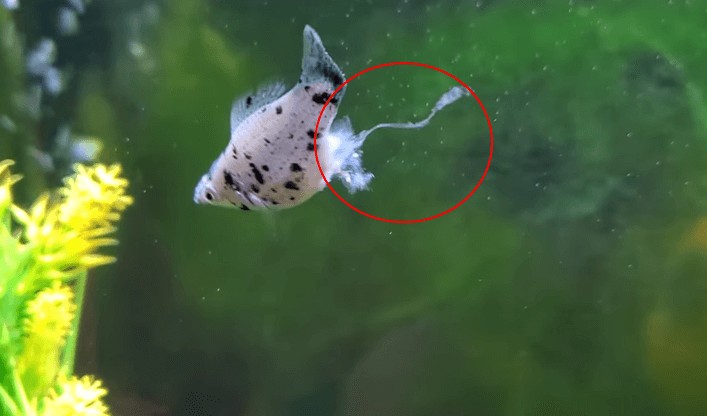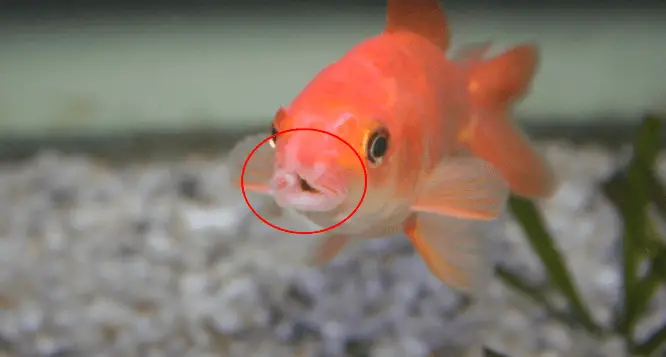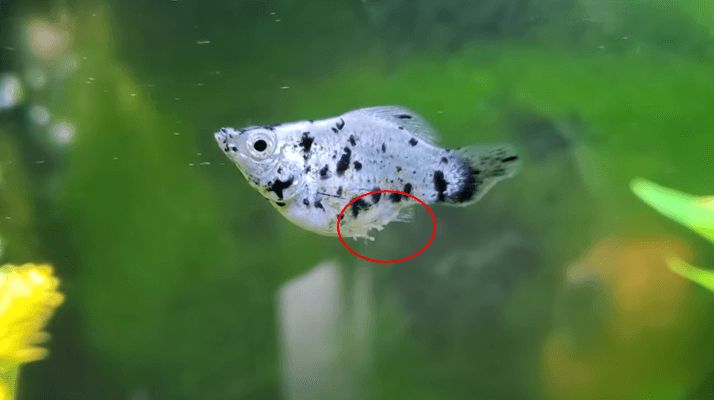
If you recently noticed white fluff-type growth on your fish, you are probably feeling alarmed. But rest assured, this article will help you identify the cause of what’s happening. Aquarium fish can suffer multiple types of infections, and any white moldy growth is definitely something to be worried about.
This article will cover the two ways you can go about treating fish fungus:
- Using medicines
- Using aquarium salt
Read on to learn about fungus fish disease and how you can make your little fish friends feel better!
Contents
What is Fungus on Fish?
If you see cottony white growth on your aquarium fish, you are probably looking at fungus.
There are several reasons why this can happen, which we will go over shortly.
First, understand that this type of thing is common and usually appears in freshwater aquariums. Fungus tends to grow on the mouth, gills, and body of fish, can sometimes be contagious, and will definitely cause harm if not treated.
The three types of fungus are:
Something important to note is that fungi are present in normal healthy aquariums but do not have to pose a problem. When the environment is right, and fish are healthy, there should be no risk of infection.
The good news is, if fungi have already caused you a problem, it is really simple to rid of, but first, let’s discuss why you should treat it and why you shouldn’t wait!
The Harmful Effects of Fungal Disease on Fish
Fungal disease damages the body and brain and, as stated, causes cotton-like growths to form. The fungus can spread to the blood, causing illnesses such as fin rot or dropsy. The longer your fish has the infection, the more prone they are to further infections.
So as soon as you notice the illness, it’s important to treat your fish immediately! Unfortunately, fungal infections can even cause death.
Fish Fungal Infection Symptoms
There are many different types of fungal infections, and unfortunately, it’s not very hard for your fish to be affected. Environmental changes are the biggest culprit for causing fish to be stressed and become sick. Let’s take a look at some of the symptoms that indicate fungal infections:
- Unusual behavior
- Open sores
- Discolored spots
- Cotton growths
- Swollen abdomen
- Sluggish movements
- Deteriorating fins
Have you ever heard about fin rot? That is an illness that causes the fins to deteriorate on your fish. A fungal infection can also cause this illness to show up.
Another common illness that shows up is “dropsy”. The infection causes the abdomen to swell and the scales to stand up all prickly like a pinecone.
Keep these symptoms in mind when examining so that you can recognize when your fish are sick.
Causes
There are three times when fungus becomes a problem. These are poor water quality, transition from brackish water to fresh water, and poor nutrition.
1. Poor water quality is one of the biggest factors in fish developing fungal infections. It allows fungal spores to multiply much faster. For instance, fish kept in small bowls without filters are more likely to get sick.
Related posts:
7 Effective Ways to Save Your Fish from Ammonia and Nitrite
6 Effective Ways to Control Your Tank’s Nitrate Levels
2. Another reason is that farms commonly raise their fish in brackish water, so the transition to your freshwater aquarium can be very stressful for your fish. It causes their immune system to become weak, making them more susceptible to catching a fungal infection.
3. Now let’s talk about diet. Just like humans, fish also need a well-balanced diet. Just like you wouldn’t want to eat the same thing every single meal, you need to switch up what you’re feeding your fish. By not providing them with a variety of different nutrients, you risk their immune system compromising. And a compromised immune system leads to a sick fish.
4. Overall, stressed-out fish tend to be unhealthy and have lower immune systems. The healthier and happier you keep your fish, the more likely their bodies can fight off those nasty fungus infections.
Don’t worry, we will discuss the treatment and the prevention ahead!
How to Treat
Treatment No. 1: Using medicines
Step one – You need to clean your tank thoroughly before adding medicines. Here are the reasons why:
- A clean tank will produce a stress-free environment for your fish to recover in.
- It sets the stage for medications since you will not be able to do any water changes while medicating
If your aquarium glass is dirty, clean it off so you can assess your fish’s symptoms as you go through the treatment process. Once you’re ready, use a siphon to vacuum the bottom of your aquarium.
Step two – you will need to remove any chemical filtrations as it will cause the medicine not to work.
Treating the different types of fungus
Depending on the location of the fungus, the treatment will be different. Here are the two types:
- Fungus on the mouth
- Fungus on the body
Fungus on the mouth (Mouth rot or cotton mouth)

This type of fungus needs to be treated with antibiotics. For instance, Kanaplex is an antibiotic that is effective for fish and safe for plants. Follow the instructions exactly as they are on the box, and do not skip or stop doses even if symptoms are gone.
Fungus on the body
This type of fungus needs to be treated with antibiotics and antifungal medication. Ich – X is an antifungal medication that is also plant-friendly. Follow the dosing instructions as recommended.
Observe until symptoms disappear
Remember not to do any water changes during this time. Once the treatment process is over, keep watching to make sure symptoms do not return. If symptoms persist or return, there is one more option…

Treatment No. 2: Using aquarium salt
When using aquarium salt to treat fungus, it’s important to note a few things first:
- It is not plant-friendly and can harm snails and some fish like anchor catfish
- It does not evaporate and only disappears after a water change
Start with a very small dose and watch for improved symptoms. If need be, gradually increase the dose until symptoms leave.
How do you prevent aquarium fungus?
So once you have successfully ridden of those unpleasant fungi and your fish are happy and in great health, how do you keep them from coming back?
Great question!
First, above everything, keep your tank clean. Change out a portion of the water every week to keep it fresh. Keep an eye on your filter and use your siphon to clean junk and build-up from the bottom of your aquarium.
Next, you should supplement with minerals and salts, especially when first introducing your fish to your freshwater aquarium. This will help build back their immune systems and prevent them from coming down with a fungal infection.
Don’t forget about the stress factor. Stress will weaken your fish quickly. That’s why it’s important to keep your tank clean and large enough (5+ gallons) so that they have space and high-quality water. Things you can do to keep the water quality high are regularly changing the water, purchasing a heater, installing a filter, and introducing plants to your aquarium.
Lastly, provide your fish with different types of food, not just one kind of flake every day. And you want to go with fresh, high-quality foods. Separating your fish food in freezer bags and freezing them is a great way to keep it fresh. If food is left behind in the aquarium, you’ll want to make sure you clean it out sooner than later so that you don’t risk bacteria build-up.
Thankfully, fungal infections are pretty preventable, so following this guide can definitely help you keep your fish safe and healthy. Remember your prevention strategy – adding minerals, keeping everything clean, and providing a variety of nutrition. Good luck!
FAQ
Q: Will fish fungus go away by itself?
A: No, without rapid treatment, fungus infections spread quickly. Fish fungus should be treated as soon as possible. If you do not treat it quickly and appropriately, it will spread and cause your fish more harm, if not death. And you also risk having the fungus infection spread to the rest of your fish. There are several treatment options, but they must be followed exactly to successfully rid fungi.
Q: How long does it take for fish to recover from fungus?
A: It can take fish a few days to a week to recover from a fungal infection. This depends greatly on the type and degree of their infection and how you go about treating it. Because fungus causes open sores, you want to make sure to clean their environment and treat them with antibiotics as well as antifungal medicines to ensure they get better. For less severe infections, you could see results in a matter of days, but make sure you follow through with treatment so that it doesn’t come back.
Q: Can humans get fish fungus?
A: It is very rare for a human to get a skin infection from touching an infected fish or aquarium, but it is possible. This only happens when the person has a cut or scape. Now that you are aware, you can take extra precautions to make sure you stay safe. This is as simple as wearing rubber gloves before messing with your aquarium – especially if you have an open wound. The likelihood of someone getting sick is very low, so glove up and get to cleaning your fish aquarium without fear.


